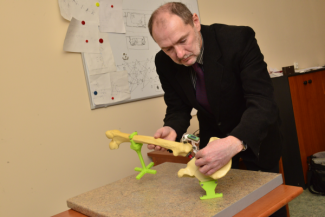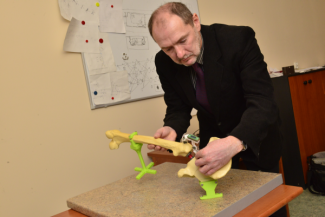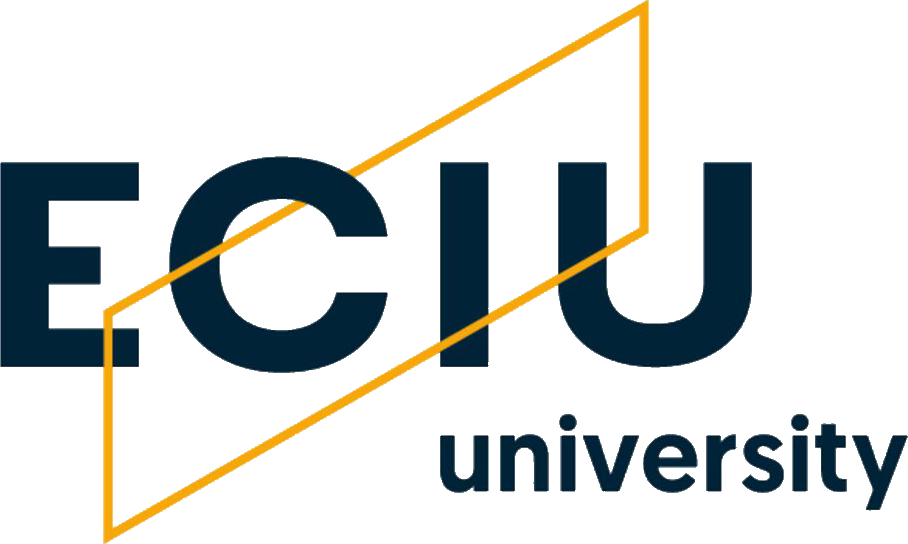You have developed a surgical instrument which can be used during the procedure of the arthroplasty of the hip. Are this type of instruments already in use?

Each year, about 2 million procedures of this type are performed globally. For a long time now, orthopaedic surgeons have been striving to eliminate leg length discrepancy in patients undergoing the arthroplasty of the hip. Unfortunately, some patients develop gait disorders as a result of the procedure because surgeons are not able to assess accurately whether the prosthesis is placed in the exact location of the replaced hip. A literature review reveals that there are many methods of intraoperative limb length measurement but none is good. Surgeons all over the world have been complaining about the instruments that have been proposed to them and have reported them to hinder the surgery. Doctors have to be extremely careful not to displace anything during the surgery, which can be rather difficult as when they use heavy instruments it is easy to move other instruments such as measurement instruments, which, in turn, renders the measurements unreliable. That is one disadvantage of the instruments that are currently in use. Another disadvantage is longer, even by half an hour, duration of the procedure. Additionally, the solutions available today tend to be expensive. They cost several hundred thousand euro. Although it is true that they can be used a multiple number of times, the amount that a hospital needs to spend to purchase them is significant, often impossible. A few hospitals in Lodz do have such devices yet do not use them because they are too cumbersome and prolong the duration of the surgery.
How is the instrument you have developed innovative?
Our device is innovative in a number of ways. First, it is very small so it does not get in the way during the surgery. In its longest place it measures up to 10 cm and it fits entirely into the incision. What is more, the device is disassembled during the surgery and what is left are two small markers on the bone which do not constrict the surgeon. It is easy to assemble. There is no risk of damaging the patient's bone. Its third advantage is the price. The task that the surgeons set for us was very clear. The needed a single use device - in line with the global trends in medicine. The cost of the arthroplasty of the hip ranges from 6 to 12 thousand zloty. The new solution was required not to raise this cost significantly. We estimate that our solution will cost about 100 to 200 euro. The measurement accuracy of the device is at the level of ±1 mm, however, I am positive that we can improve it and the final version of the device should have the accuracy of ±0.25 mm.
To what extent is this device going to facilitate the performance of the procedure and how will patients benefit?
The primary advantages for the patient will be of two kinds. First, the time of the surgery will be reduced. This will improve the safety of the procedure, limit the risk of death or complications. Second, the patient will have normal gait. Medical errors related to gait disorders caused by the arthroplasty of the hip are one of the leading reasons for litigation against orthopaedic surgeons in the United States. This shows you the scale of the problem. As far as medical professionals are concerned, they will also benefit from the shorter duration of the surgery as it involves significant physical and intellectual effort and is stressful. They will be able to be confident that they have helped the patient. Using single use devices we can be certain of their sterility, which is extremely important both for the patient and for the medical personnel. There is yet another group of beneficiaries that needs to be borne in mind. It is the manufacturers of the device who are certain to sell their product.
Could you tell us a little bit about the design of the device?

The medical community specified when discussing their needs with us that they wanted a device that was easy to use, was single use, had the accuracy of ±1 mm, was not cumbersome, and was small enough to fit through the incision. The prototype is about 10 cm long, cross section dimensions ca. 2 cm by 2 cm, and weighs about 40 g. The instrument is flexible and can be bent in several places. It has a small screen which displays key information for the surgeon. It has two buttons: one that says "next", and the other that says "back". We plan that the device will be made from plastic, which shall reduce the manufacturing cost.
What can you say about its commercialisation?
We have talked with two possible manufacturers of the device. They want to be partners in the research project for which we are expecting a grant from the Foundation for Polish Science. These manufacturers are to make their financial contribution and join in the next stage of the research. We have also been talking with foreign medical equipment manufacturers and we know that an international concern has been interested. This just goes to show how necessary this project is. Medical professionals have stressed that they have been waiting for such a device for years. Therefore, there is a market for this product. Lodz University of Technology holds patent rights and that is why we will join in the promotion of the device in the community of medical professionals. We have received very favourable opinions of the Polish Society of Orthopaedics and Traumatology.
How long have you been working on this project?
It has been two years now. Considering the constraints of scientific research, our pace has been quite impressive. It has been possible because the project research team have already had research experience in other fields that happened to be useful in this project. We had all components necessary to complete the projects.
You have a long history of cooperation with the medical community. One of its outcomes is the RobIn Heart. Could you tell us what medical robots are?
Medical robots are semi- or fully automatic devices which are supposed to support surgeons during the surgery. They will not replace the surgeon because there is nothing you can substitute for experience and knowledge of a human being. Frequently though, medical professionals need a sophisticated instrument to perform actions they cannot perform on their own.

The RobIn Heart, for example, is telemanipulator controlled by a surgeon. The robot is equipped with a laparoscope which enters the patient's body without the need for a large incision. The precision of movements for the robot is ±0.1 mm. Another advantage is that it can process information from a number of different sources simultaneously. The surgeon would not be able to translate these results into the location of the device. Right now, we are working on a roundworm-like robotic endoscope for small intestine examination. Thanks to this device it will be possible to go much farther than during a regular colonoscopy performed today. These devices enable surgeons to make better use of their knowledge.
It's great to be a scientist because ...
... discovering and inventing something that nobody else has ever thought about before, something that can be put to good practical use can be extremely gratifying. It happens sometimes that a discovery comes as a concluding, life-time achievement of a scientist's work because many paths that seemed likely to lead to an invention, in fact led down the garden path. However, as I have always said, negative result is also meaningful as it shows you the way you need to take.
